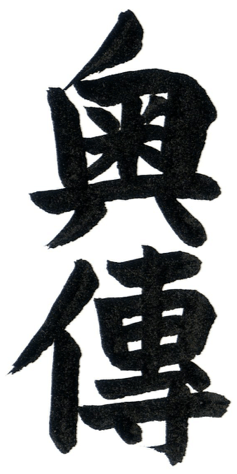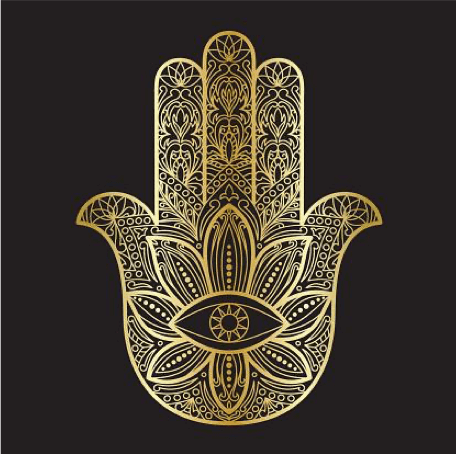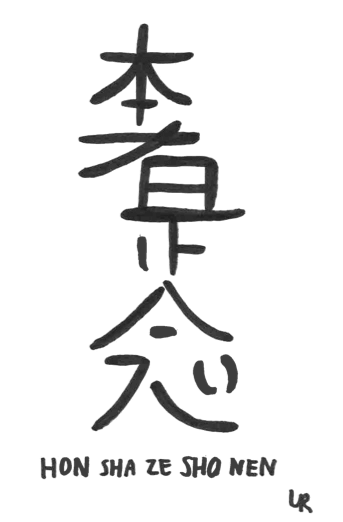What is Reiki therapy?
Reiki is based on the idea that an unseen life force energy flows through all living things. This invisible, powerful energy is believed to be responsible for maintaining physical and mental health. Practitioners believe Reiki can help restore balance to this life force and enhance overall well-being.

During Reiki sessions, a practitioner will place their hands lightly over or on specific areas of the body while in a meditative state. The practitioner may also move their hands above different parts of the body without touching it at all, allowing them to focus life force energy directly onto certain areas.
Reiki is said to have many benefits and can be used as part of a holistic approach to health and well-being.
Benefits include but are not limited to:
- Improving overall wellbeing
- Increasing energy levels
- Reducing pain
- Lessening the perception of pain
- Reducing stress levels
- Increasing relaxation
- Improving sleep
- Reducing intensity of physical pain
- Reducing fatigue
Overall, Reiki is a gentle practice that can be used as part of an integrative approach to health and wellbeing. By re-balancing the body’s natural energies and promoting relaxation, Reiki can offer many benefits for both mind and body.
While Reiki cannot directly cure diseases or illnesses, it may provide relief from certain symptoms or improve overall well-being when used correctly. It is always best to speak with your healthcare provider before beginning any Reiki session to ensure you are safe and comfortable with the process. You may consider a consultation with Dr. Guita Balakhane, a licensed medical doctor with over 30 years of experience in the holistic therapy space. Now, let’s get into the details of Reiki therapy.
What’s the history of Reiki?
Reiki therapy is a form of energy healing that has been used for thousands of years. It originated in Japan, where Reiki masters would use their hands to channel the flow of life-force energy through the body. This energy was thought to be able to heal physical and mental ailments, while also providing spiritual guidance.

Dr. Mikao Usui, the founder of Usui Reiki and also known as Usui Sensei, was born in 1865 into a wealthy Japanese Buddhist family. Unlike many who are born into riches, Dr. Usui’s parents made sure he received a well-rounded education that included time spent at a monastery where he learned martial arts and swordsmanship. In addition, while at the monastery he studied Kiko which is the Japanese form of Chi Kung.
How did Reiki come to life?
Dr. Usui’s interests in medicine, psychology and theology developed throughout his education. These interests eventually led him to seek out a method of healing that didn’t require any specific religious beliefs – something that would be available to everyone. This way of thinking is what prompted him to look into the laying on of hands as a means of healing himself and others.
Dr. Usui was always on the move throughout his lifetime, exploring different healing systems and taking on various roles such as a reporter, secretary, missionary, public servant and guard. Eventually, he became a Buddhist priest/monk and resided in a monastery.

When Dr. Usui was training in the monastery, he took a rediscovery course that lasted for 21 days where he meditated and prayed in a cave on Mount Kurama . On the morning of day 21, he had an experience that would forever change his life – He saw ancient Sanskrit symbols which helped him create the system of healing (ie: Reiki) that he’d been trying to invent for so long. This was the inception of Reiki.
After Dr. Usui’s spiritual awakening on Mount Kurama, he established a clinic for healing and teaching in Kyoto. His practices grew in popularity and showed great success with many people. Soon enough, his reputation as a great healer began to spread and the interest in Reiki skyrocketed.
What’s important about Reiki?
Dr. Mikao Usui created Reiki with some basic principles at the core. These principles are critical in practicing Reiki and maintaining a peaceful mind.
There are 5 main principles of Reiki, as seen below:
- Just for today, I will not be angry.
- Just for today, I will not worry.
- Just for today, I will be grateful.
- Just for today, I will do my work honestly.
- Just for today, I will be kind to every living thing

These principles are a great way to get started with Reiki as they will reinforce positive thoughts throughout your daily life. It may seem obvious at first, but implementing these core principles are much harder than you may think. Focusing on diligently adhering to these principles will surely lead you to a healthier, happier life.
The Reiki principles help us to stay focused and in tune with Reiki energy, allowing us to practice Reiki with greater intention. They offer an opportunity for personal growth and transformation, helping us to align our lives with Reiki energy. Practicing these Reiki principles can lead to a more balanced lifestyle and greater wellbeing.
By living our lives according to the Reiki principles, we can enjoy the many benefits of Reiki energy and use it as a tool for self-improvement. Reiki is not only about healing; it’s also about understanding ourselves on a deeper level and creating positive changes in our life.

From meditating on Reiki to living Reiki principles in everyday life, Reiki offers many ways for us to align our lives with what we see fit. By taking the time to practice it, we can use this therapy to create balance and harmony within ourselves. The Reiki principles serve as a guide, allowing us to make mindful decisions and stay connected to Reiki energy. All in all, following the Reiki principles and practicing Reiki can help us lead happier and more fulfilling lives! If you are looking for a Reiki specialist, Dr. Guita Balakhane is a licensed medical doctor with 30 years of experience in this field. After thousands of happy clients later, Dr. Balakhane is proud to offer Reiki in her medical practice. Please contact us for a consultation today.
How do doctors conduct Reiki therapy?
During a Reiki session, the practitioner places their hands lightly on or above the body in order to transfer energy. They may hold their hands in one spot for several minutes or move them from place to place. They may wave their hands and arms over specific areas of your body, channeling the energy straight to you. Or, they may gently touch your skin in different areas of your body to spread the energy out evenly. The gentle touch of the practitioner is believed to help facilitate healing and balance within the body. Some people report feeling warmth, tingling, or pulsing during a session, but others don’t feel anything at all.

Reiki therapy can be used for relaxation, stress-reduction, and pain relief. It may also be used for other conditions such as anxiety, depression and insomnia. Additionally, some people feel that regular Reiki sessions can strengthen their physical and emotional wellbeing over time.
Although research into the effectiveness of Reiki therapy is still ongoing, many people report feeling more relaxed after receiving a session. If you’re interested in learning more about what Reiki therapy is and how it could benefit you, we recommend consulting with a certified practitioner who can provide more information.
What to expect during a Reiki therapy session?
A typical session lasts 45 to 60 minutes, but it can be shorter or longer depending on your needs. You’ll usually lie down on a massage table during the session, but you can also sit or stand if you prefer. You should wear loose, comfortable clothing so that you can fully relax.
The therapist will start by placing their hands on your shoulders or head and then move them down your body as they work. You may feel some gentle pressure as they do this. You may also feel heat emanating from their hands, but not everyone experiences this sensation.

After the session is over, you should drink plenty of water and rest for a few minutes before resuming your normal activities. Most people report feeling very relaxed after a session. Some also report experiencing reduced pain, improved sleep, reduced anxiety, and increased energy levels.
It’s important to remember that Reiki therapy is not a substitute for medical care from a licensed healthcare professional. Be sure to tell your doctor about any complementary therapies you’re considering so that they can provide the best possible care for you. Dr. Guita Balakhane has used Reiki therapy on her clients for decades and she has seen astonishing results in many of her clients. If you are interested in Reiki, consider a consultation with Dr. Balakhane today.
What conditions can Reiki help with?
Reiki therapy can help with all sorts of ailments and isn’t specific to just one type. People all around the world have practiced Reiki therapy to help them with all kinds of diseases, including:
- Chronic pain of all kinds
- Rare Parkinson’s disease cases
- Unforgiving infertility
- Many forms of Cancer
- Indigestion problems
- General depression
- Debilitating anxiety
- Unique Illnesses

Reiki therapy can help you overcome these ailments and many more. The first step in your Reiki therapy journey will be an unforgettable one, especially when you begin to see the positive changes it will make in your life. Give it a try today!
What are the dangers of Reiki therapy?
There have been no reports of dangerous outcomes while undergoing Reiki therapy, mainly because the therapy itself is non-invasive. There are no dangerous materials or props used in Reiki therapy; no needles, no pills, no medications, no patches, no topicals, nothing that could potentially put the client at risk. Reiki is simply the transfer of energy from the healer to the client, nothing more, nothing less.

There are a few ways that the client may feel uncomfortable during a Reiki session. If the client has PTSD or other anxiety disorders, they may produce feelings of discomfort while undergoing a Reiki session. This might have to do with the intensity of the energy being transferred from the healer’s hands. Very few people may feel some sort of mild discomfort for a short period of a few seconds, but nothing that would endanger their health or overall well-being. It is a very rare occurrence to feel any type of pain or negativity during a Reiki session. People usually experience quite the opposite and are always satisfied with their therapy sessions.
What is Reiki attunement?
A Reiki attunement, also known as Reiju in Japanese, is a sacred and holy ceremony in which the healing master attempts to open the energy channels of a student. The master prepares them to be able to channel their inner energy frequencies onto others. It’s a form of learning the craft of Reiki, recognizing and being able to tap into your healing capabilities, and offering those energies to others. During this process, the Reiki master discusses the power of these positive energies and how they may help others connect more deeply with their minds, bodies, and spirits.
There are three levels to Reiki attunement. They include:

Level 1 (Shoden): In the first level, the healer’s goal is to make the student aware of their inner healing energies. They will attempt to bring these energies to fruition so that the student can feel it for themselves. In this level, students will learn how to perform Reiki on themselves and others with a special healing touch.

Level 2 (Okuden): During the second level, the healer familiarizes the student with Reiki symbols and mantras. This level introduces the student to the five symbols taught in Reiki therapy and opens up the heart chakra.

Level 3 (Shinpiden): This level is also known as the Master Level and it entails teaching a student how to attune other people into Reiki.
These levels of Reiki attunement are unique when compared to other forms of energy healing, as they are open to all who feel they are ready to take their Reiki practices to the next level. Recruiting others into the world of Reiki is a beautiful thing that will open the pathways of spiritual healing for even more individuals who believe they need something more to heal their illnesses. In addition to the three levels of Reiki attunement, there are five symbols you should familiarize yourself with, as they are critical in understanding Reiki to the fullest extent.

The five main symbols of Reiki include power, harmony, distance, mastery, and completion. We will briefly discuss each one below:

Cho Ku Rei (Power): This symbol is all about power and the ability to either increase or decrease it. It represents chi, the transfer of energy throughout the entire body. It can help heal the body of injuries and purify the soul of negative energies. It can also help you in relationships that need a bit of a boost and it can even provide protection against misfortunes.

Sei He Ki (Harmony): This symbol is used when an individual is seeking mental and emotional balance. It can aid in remembering things and improving memory, while reducing the effects of headaches. It can also be used as a protection symbol to rid the body of negative energies.

Hon Sha Ze Sho Nen (Distance): This symbol is vastly different from the other symbols in that it focuses on improving one’s mind about the past, present, and future. Although nothing can change the past, this symbol attempts to change the way an individual thinks about their past, their failures, and their misfortunes; turning them into positive learning experiences instead.

Dai Ko Myo (Master): This symbol is the empowerment symbol and it is the most powerful and transformative symbol of all the Reiki symbols. It translates to “great empowerment,” and it aims to bring people closer to their God.

Raku (Completion): This symbol is the grounding symbol. It’s used as the last step of the therapy session to absorb all of the energies that were transferred throughout the session. It also allows masters to rid their own bodies of any negative energies that they may have contracted while working with a client.
Concluding thoughts on Reiki Therapy:
Reiki is a great alternative therapy that helps relieve all sorts of pains and illnesses throughout the human body, whether it’s stress, anxiety, chronic pain, or many others. The therapy consists of a healing touch that’s said to promote healing and balance within one’s mind and body, allowing energy to flow freely and clearing any blocks that may get in the way of spiritual healing. Reiki has been around for over a hundred years and has been practiced in many regions across the world. There are countless people who vouch for the effects that Reiki has had on their lives, citing clarity, balance, healing, and spiritual awakening as the top advantages of this practice.
If you’re interested in Reiki therapy, you may consider contacting a practitioner like Dr. Guita Balakhane, a professional medical doctor who has been in the energy healing space for over 30 years. Her expertise is unparalleled in this industry and she may be able to provide the necessary guidance you seek in order to successfully dive into Reiki and experience all of its wonderful benefits.

